Designing a beautiful garden in an arid climate doesn’t mean sacrificing color or creativity. Desert flowering plants not only survive but thrive in harsh, dry conditions, often putting on dazzling displays of blooms with very little water. These resilient beauties are ideal for water-wise landscapes, rock gardens, or xeriscaping projects. From bold blossoms to architectural foliage, these 10 unique desert flowering plants will help you create a stunning, low-maintenance garden that embraces both form and function.
1. Desert Marigold (Baileya multiradiata)
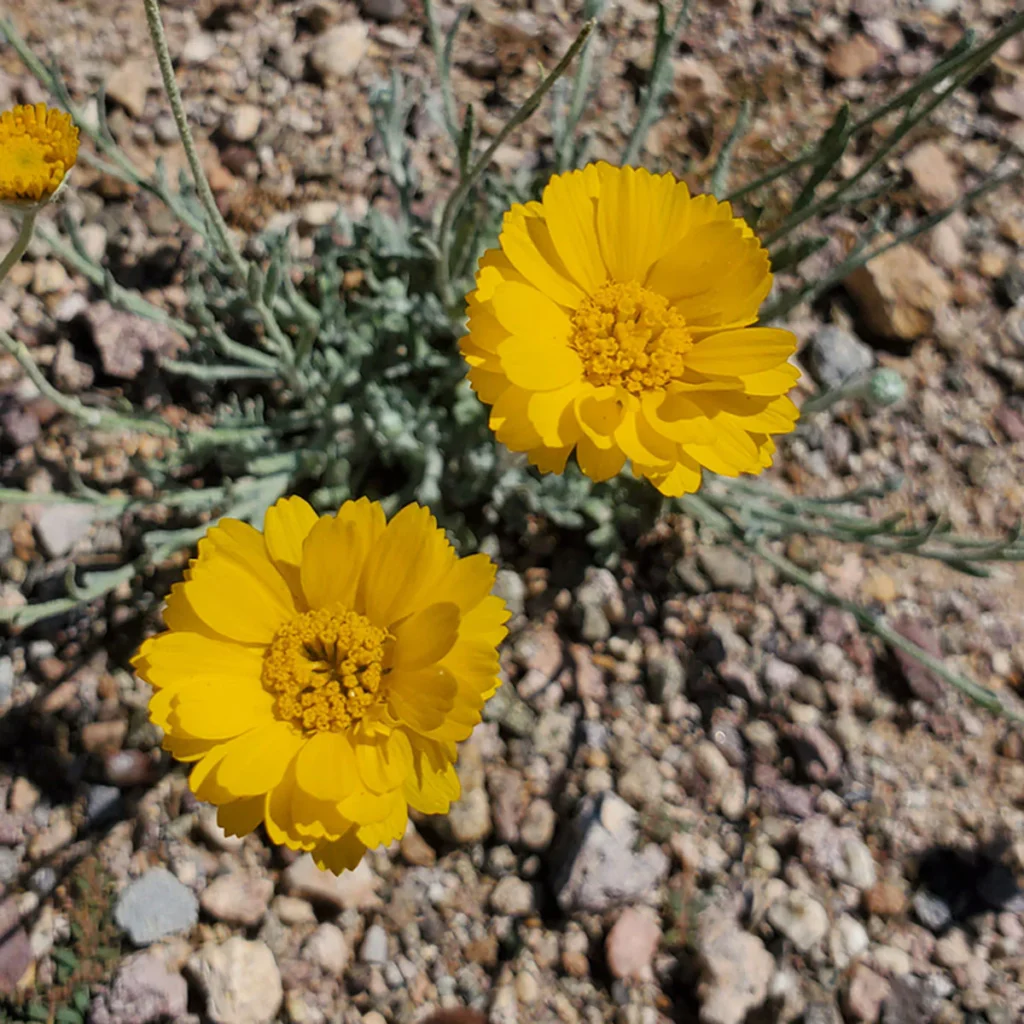
Desert Marigold brings a cheerful splash of yellow to dry landscapes with its bright, daisy-like blooms and silvery-green foliage. Native to the American Southwest, it’s a true desert survivor, thriving in poor, rocky soils with minimal water. This perennial can bloom nearly year-round in warm climates, especially after rains. It grows about 1–2 feet tall and wide, attracting pollinators like bees and butterflies. With its tolerance for heat and drought, Desert Marigold is a must-have for desert gardens.
2. Red Bird of Paradise (Caesalpinia pulcherrima)
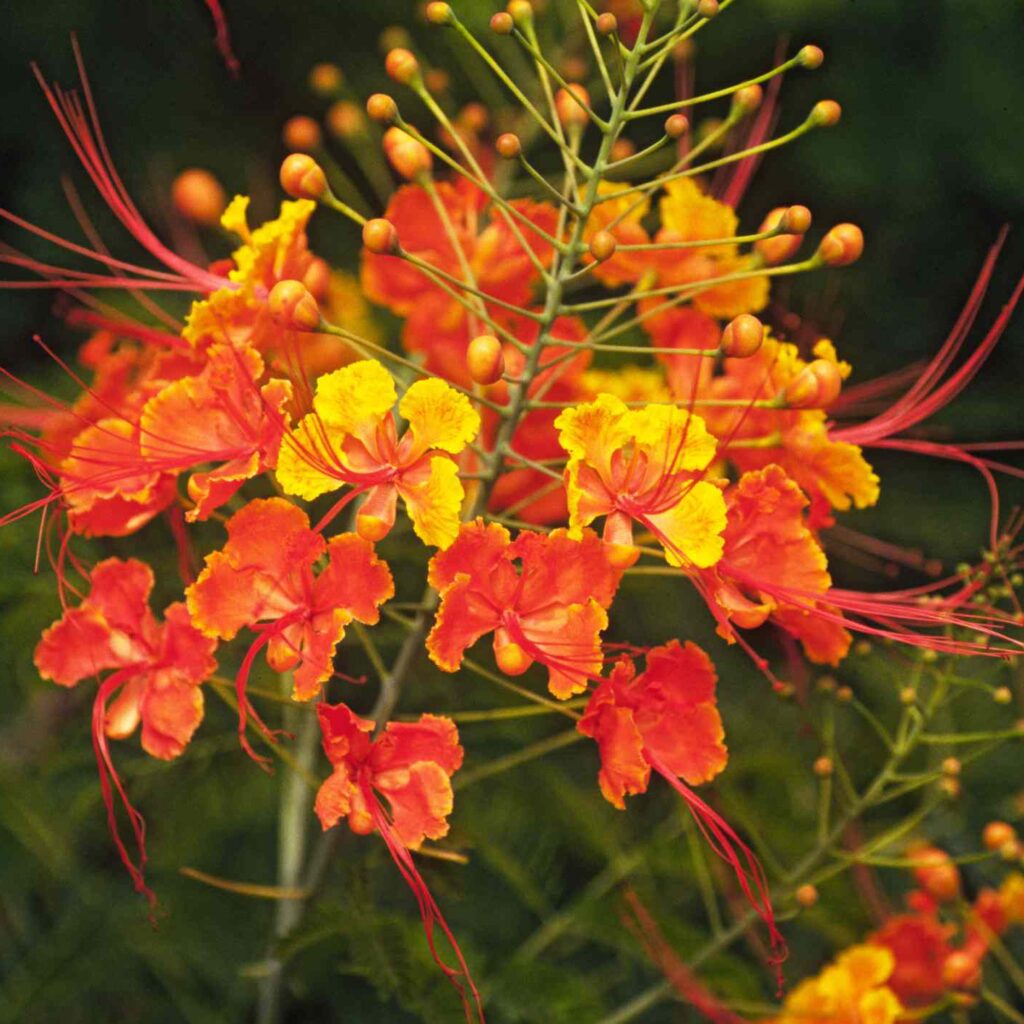
Also known as Mexican Bird of Paradise, this striking plant boasts vibrant orange-red flowers with long stamens that resemble feathers. It’s a favorite for desert landscapes due to its dramatic color and drought-tolerant nature. Reaching up to 5–10 feet tall, it can be pruned to stay compact or shaped as a small tree. The Red Bird of Paradise blooms heavily from summer to fall and thrives in full sun and well-draining soil. It’s also a magnet for hummingbirds.
3. Parry’s Penstemon (Penstemon parryi)
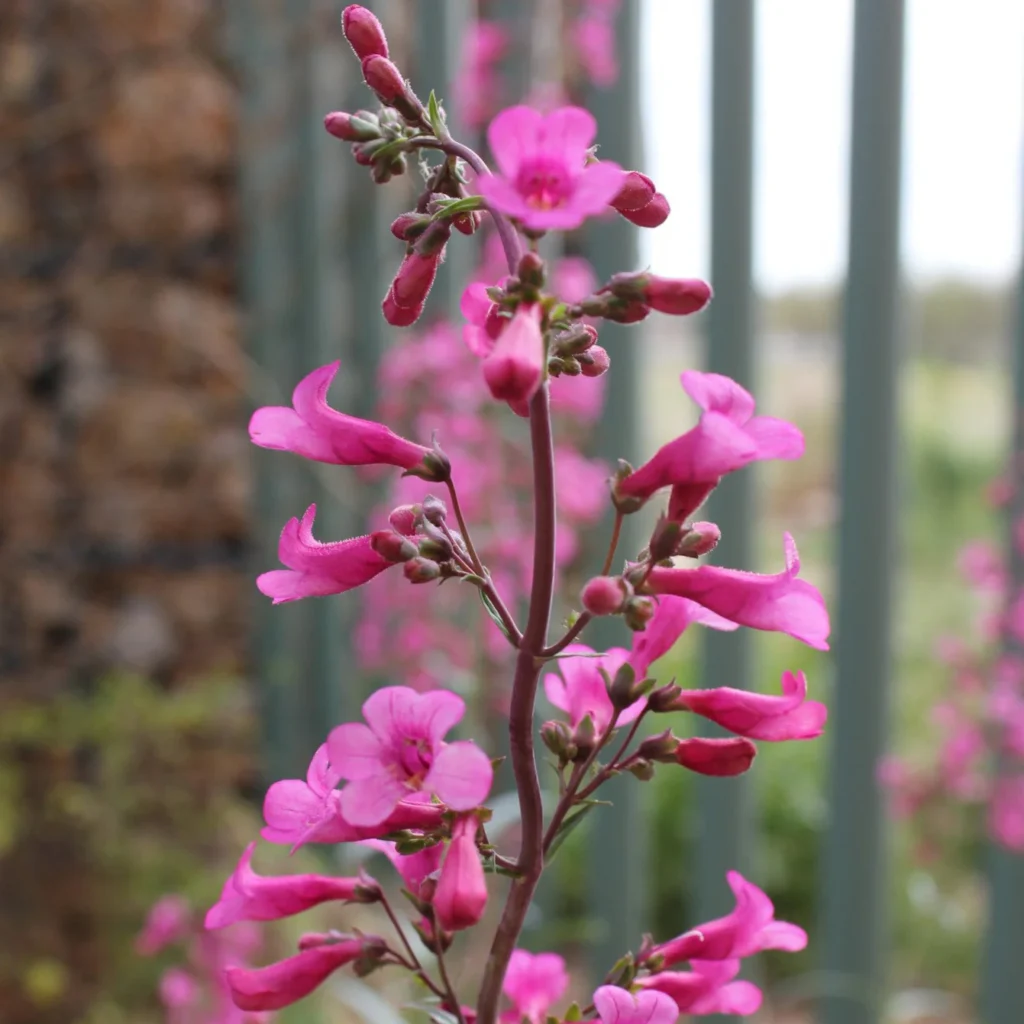
This Arizona native dazzles with tall spikes of tubular, hot pink flowers that emerge in early spring, often before many other plants bloom. Parry’s Penstemon is a perennial that grows well in rocky or sandy soils and requires minimal irrigation once established. It grows up to 3 feet tall and is excellent for adding vertical interest. Not only is it drought-tolerant, but it’s also a favorite of hummingbirds and bees, making it perfect for pollinator-friendly gardens.
4. Desert Willow (Chilopsis linearis)

Despite its name, Desert Willow isn’t a true willow but a flowering tree that resembles one with its long, narrow leaves. In summer, it produces trumpet-shaped flowers in shades of pink, purple, or white that resemble orchids. It’s highly drought-tolerant and thrives in full sun and sandy or gravelly soils. Growing up to 15–25 feet, it provides light shade and attracts hummingbirds. It’s an elegant option for gardeners who want a tree with long-lasting blooms and low water needs.
5. Brittlebush (Encelia farinosa)
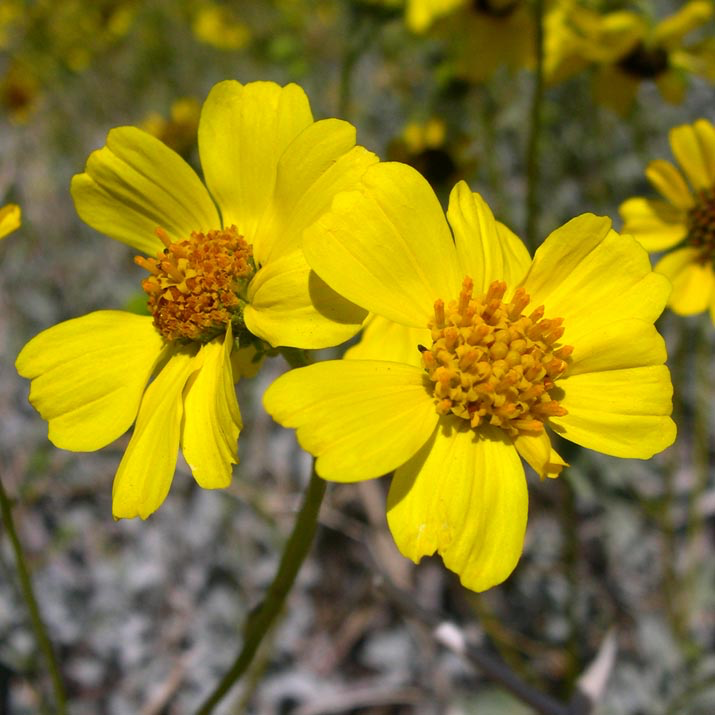
Brittlebush is a hardy shrub with silvery leaves and bright yellow daisies that bloom in spring. Native to the Sonoran Desert, it thrives in extreme heat and dry conditions. The leaves have a light, pleasant scent, and the entire plant provides contrast and texture in a xeriscape. It typically grows 2–4 feet tall and wide, forming a rounded mound. It’s perfect for mass planting, erosion control, or as a sunny accent in dry landscapes.
6. Texas Sage (Leucophyllum frutescens)
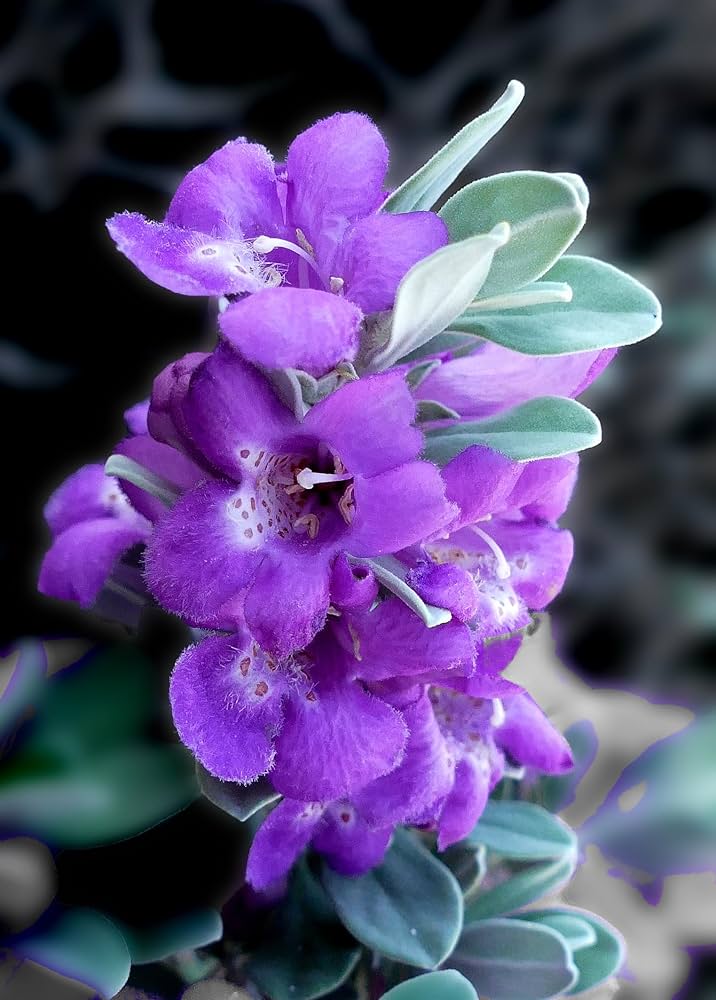
Texas Sage, also called Barometer Bush, surprises with its bursts of purple, lavender, or pink flowers after summer rains. This evergreen shrub thrives in full sun and heat, growing up to 5–8 feet tall. It has silvery-gray foliage that adds year-round interest and contrasts beautifully with its flowers. Very little water is needed once established, and it’s resistant to pests and diseases. Texas Sage works well as a hedge, border plant, or standout specimen in desert-themed gardens.
7. Firecracker Penstemon (Penstemon eatonii)

This eye-catching wildflower produces clusters of tubular, scarlet-red flowers that look like exploding firecrackers hence the name. Blooming in late winter and early spring, Firecracker Penstemon provides early-season color and food for hummingbirds. It’s native to the desert Southwest and grows well in dry, rocky soils. This perennial reaches 2–3 feet in height and needs minimal irrigation. Plant it in groups for a vivid display or mix it with other drought-tolerant perennials for a naturalized look.
8. Globe Mallow (Sphaeralcea ambigua)
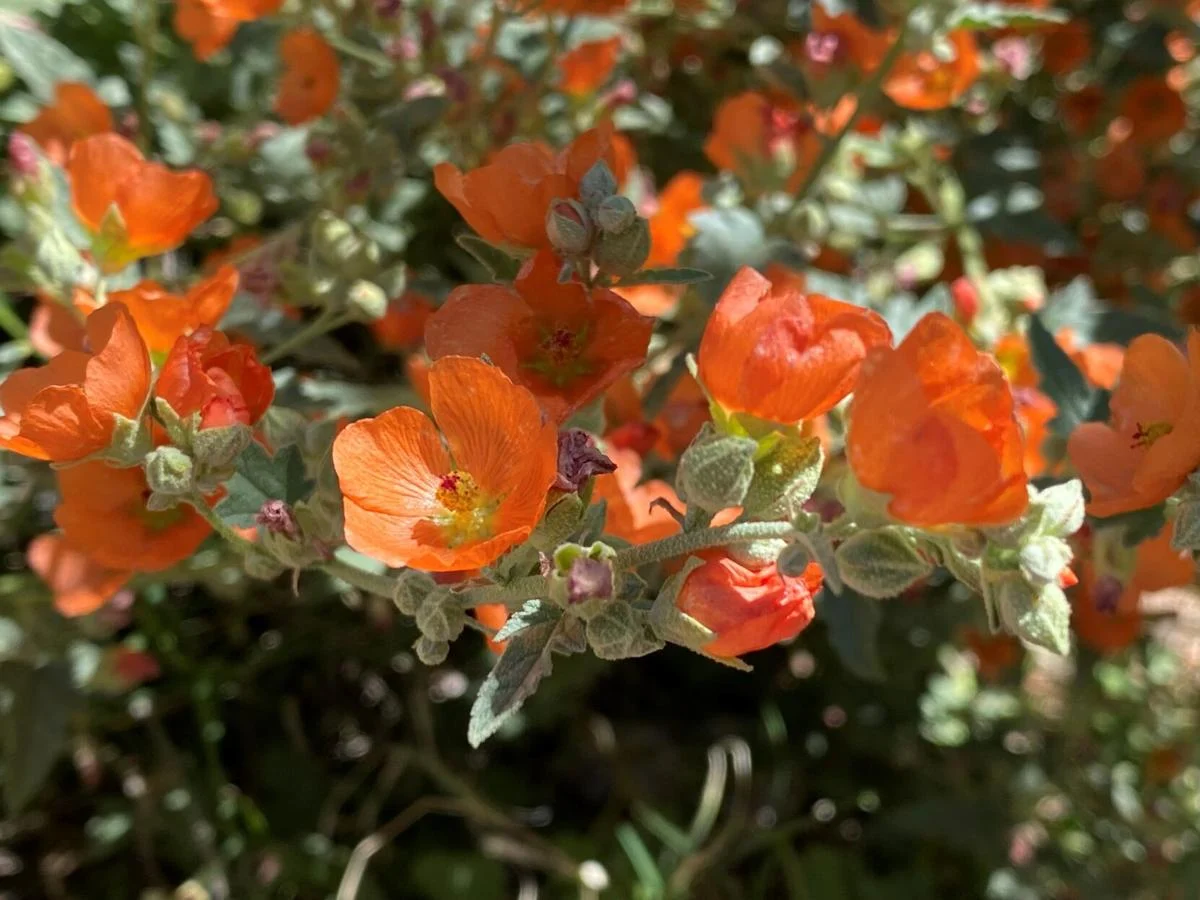
Globe Mallow is a tough, shrubby perennial that produces charming cup-shaped flowers in shades of orange, pink, lavender, or red. It blooms heavily in spring and can continue into summer with occasional watering. Growing about 2–4 feet tall, it thrives in poor soils and full sun. Its fuzzy, gray-green foliage is deer-resistant and adds soft texture to the garden. This resilient plant is excellent for pollinators and pairs beautifully with cacti and other arid-adapted species.
9. Blackfoot Daisy (Melampodium leucanthum)

The Blackfoot Daisy is a low-growing, compact perennial covered in small white daisy-like flowers with yellow centers. Blooming from spring through fall, it’s ideal for edging, rock gardens, or containers. Native to the southwestern U.S., it handles extreme heat and dry conditions with ease. It typically grows up to 12 inches tall and wide, forming neat, tidy mounds. This charming plant requires little maintenance and adds a fresh, cheerful touch to any drought-tolerant landscape.
10. Chocolate Flower (Berlandiera lyrata)
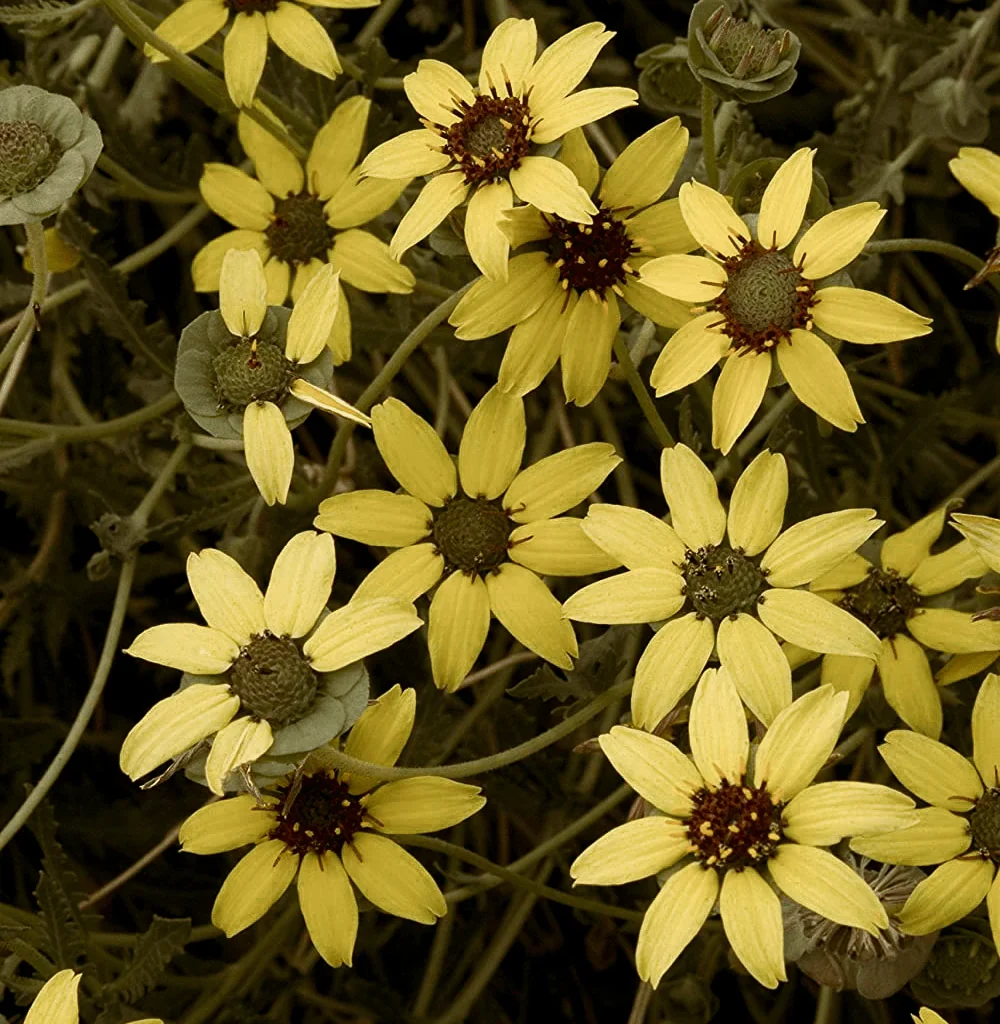
True to its name, the Chocolate Flower emits a rich cocoa scent in the morning, especially in warm weather. This unique perennial produces golden-yellow daisy-like flowers with maroon centers that bloom from spring to fall. Native to the southwestern U.S., it thrives in poor, sandy soils and hot conditions. Chocolate Flower reaches about 1–2 feet in height and spreads to form an attractive groundcover. It’s both fragrant and hardy perfect for adding multisensory appeal to your dry garden.

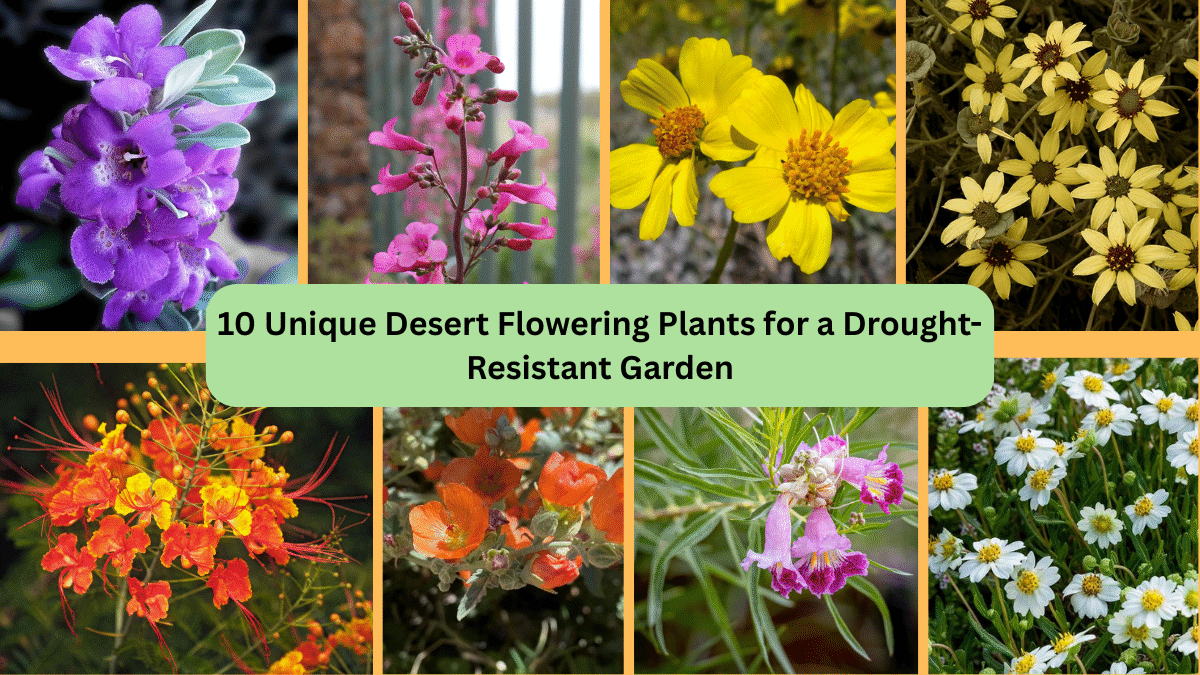


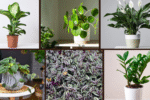
Leave A Comment